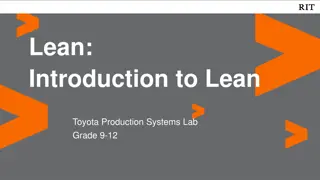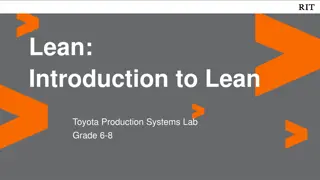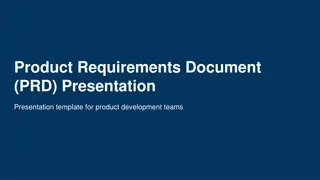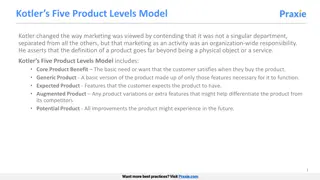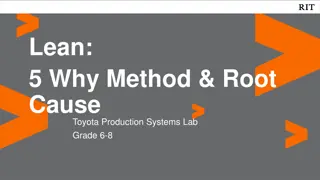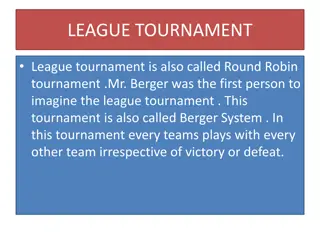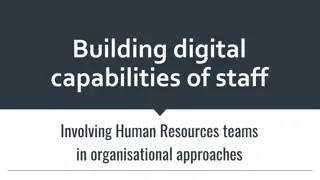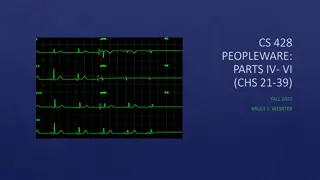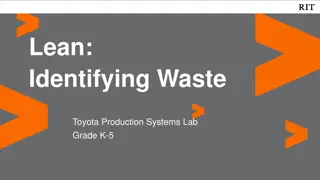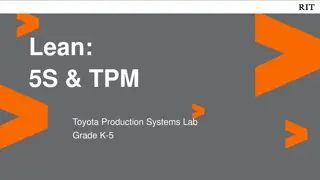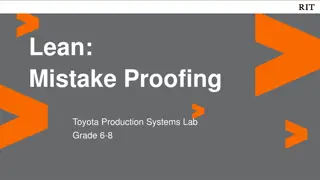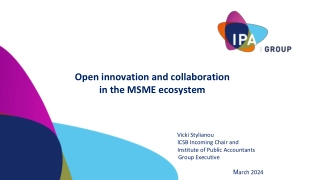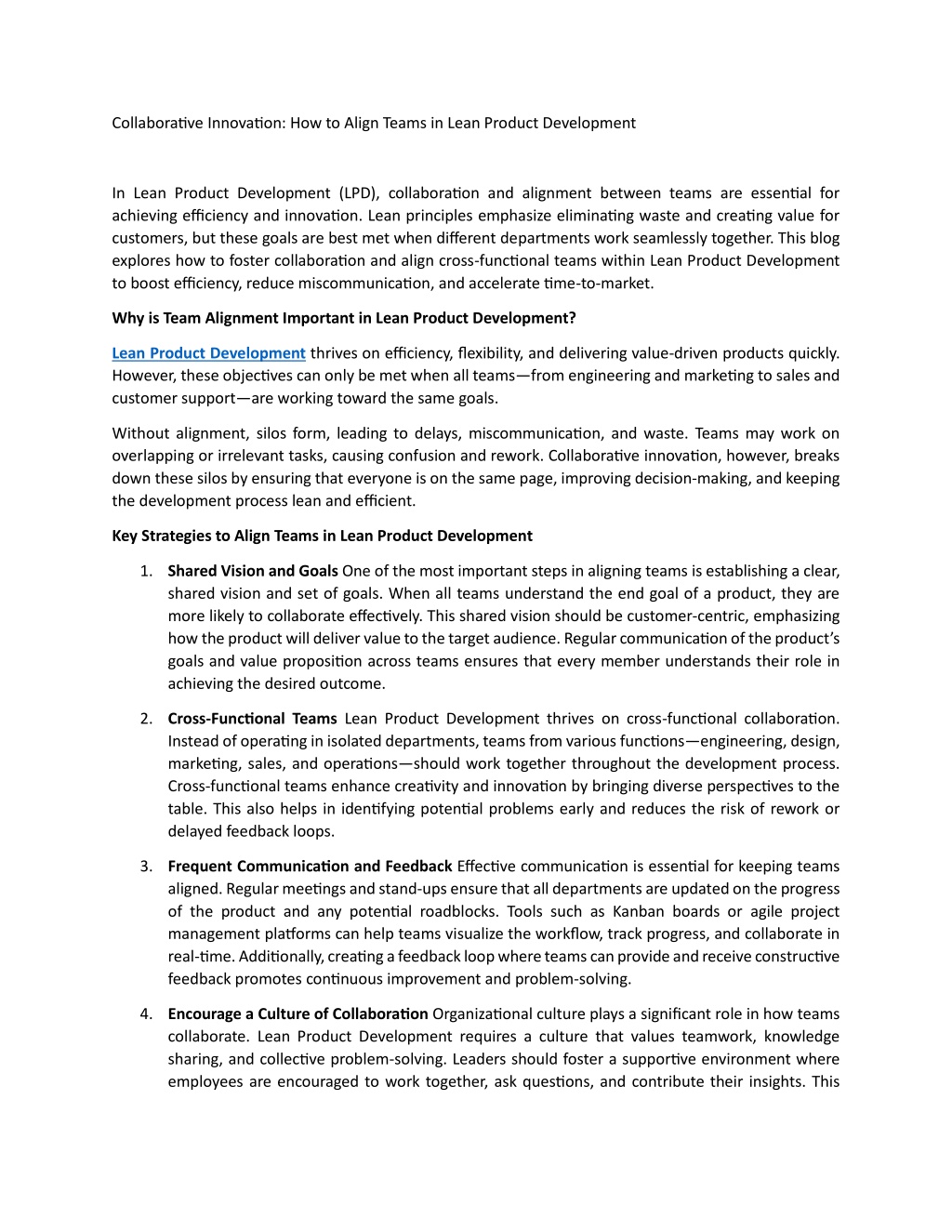
Collaborative Innovation How to Align Teams in Lean Product Development
In Lean Product Development (LPD), collaboration and alignment between teams are essential for achieving efficiency and innovation.
Download Presentation

Please find below an Image/Link to download the presentation.
The content on the website is provided AS IS for your information and personal use only. It may not be sold, licensed, or shared on other websites without obtaining consent from the author. Download presentation by click this link. If you encounter any issues during the download, it is possible that the publisher has removed the file from their server.
E N D
Presentation Transcript
Collaborative Innovation: How to Align Teams in Lean Product Development In Lean Product Development (LPD), collaboration and alignment between teams are essential for achieving efficiency and innovation. Lean principles emphasize eliminating waste and creating value for customers, but these goals are best met when different departments work seamlessly together. This blog explores how to foster collaboration and align cross-functional teams within Lean Product Development to boost efficiency, reduce miscommunication, and accelerate time-to-market. Why is Team Alignment Important in Lean Product Development? Lean Product Development thrives on efficiency, flexibility, and delivering value-driven products quickly. However, these objectives can only be met when all teams from engineering and marketing to sales and customer support are working toward the same goals. Without alignment, silos form, leading to delays, miscommunication, and waste. Teams may work on overlapping or irrelevant tasks, causing confusion and rework. Collaborative innovation, however, breaks down these silos by ensuring that everyone is on the same page, improving decision-making, and keeping the development process lean and efficient. Key Strategies to Align Teams in Lean Product Development 1.Shared Vision and Goals One of the most important steps in aligning teams is establishing a clear, shared vision and set of goals. When all teams understand the end goal of a product, they are more likely to collaborate effectively. This shared vision should be customer-centric, emphasizing how the product will deliver value to the target audience. Regular communication of the product s goals and value proposition across teams ensures that every member understands their role in achieving the desired outcome. 2.Cross-Functional Teams Lean Product Development thrives on cross-functional collaboration. Instead of operating in isolated departments, teams from various functions engineering, design, marketing, sales, and operations should work together throughout the development process. Cross-functional teams enhance creativity and innovation by bringing diverse perspectives to the table. This also helps in identifying potential problems early and reduces the risk of rework or delayed feedback loops. 3.Frequent Communication and Feedback Effective communication is essential for keeping teams aligned. Regular meetings and stand-ups ensure that all departments are updated on the progress of the product and any potential roadblocks. Tools such as Kanban boards or agile project management platforms can help teams visualize the workflow, track progress, and collaborate in real-time. Additionally, creating a feedback loop where teams can provide and receive constructive feedback promotes continuous improvement and problem-solving. 4.Encourage a Culture of Collaboration Organizational culture plays a significant role in how teams collaborate. Lean Product Development requires a culture that values teamwork, knowledge sharing, and collective problem-solving. Leaders should foster a supportive environment where employees are encouraged to work together, ask questions, and contribute their insights. This
collaborative culture should also extend to decision-making processes, where key decisions involve input from various departments. 5.Integrated Tools and Platforms To streamline communication and collaboration, organizations should implement integrated tools and platforms that facilitate real-time collaboration. Tools like Slack, Microsoft Teams, or project management software such as Jira and Trello ensure that teams can share information, track progress, and collaborate efficiently. These platforms break down communication barriers and allow for transparent project management, ensuring that everyone stays on the same page. 6.Define Clear Roles and Responsibilities Clear delineation of roles and responsibilities is crucial in preventing overlap and ensuring accountability. In a lean environment, it's important to specify each team member s role in the product development process. This avoids confusion and redundancy while making sure that everyone contributes in a meaningful way. Having clearly defined roles also streamlines decision-making, allowing the right people to take ownership of specific tasks and reduce bottlenecks. The Benefits of Collaborative Innovation 1.Reduced Waste Lean Product Development s focus on waste reduction is amplified through team alignment. Cross-functional collaboration ensures that teams are not duplicating efforts or working on unnecessary tasks. This also allows for early identification of potential issues, preventing rework and costly mistakes later in the development cycle. 2.Faster Time-to-Market When teams are aligned and working together, product development moves more swiftly. Instead of waiting for one department to finish before another begins, cross- functional collaboration allows for simultaneous progress in multiple areas. This streamlined workflow reduces time-to-market and ensures that the product gets to customers faster. 3.Improved Product Quality Collaborative innovation leads to higher-quality products by integrating diverse perspectives and expertise. Engineers, designers, marketers, and customer support teams all bring unique insights, resulting in more well-rounded and customer-focused products. The iterative nature of Lean Product Development, combined with continuous feedback, further enhances product quality. 4.Enhanced Customer Satisfaction Aligning teams with a shared focus on customer value ensures that the final product meets user needs more effectively. When all teams contribute to delivering customer-driven solutions, products are more likely to succeed in the market, leading to greater customer satisfaction and loyalty. Conclusion Collaborative innovation is the backbone of successful Lean Product Development. By aligning cross- functional teams through shared goals, effective communication, and a culture of collaboration, businesses can eliminate waste, improve product quality, and accelerate time-to-market. In a lean environment, team alignment not only enhances efficiency but also ensures that the final product delivers maximum value to customers.
Read More: https://techhorizonsolutions.blogspot.com/2024/09/collaborative-innovation-how-to- align.html


